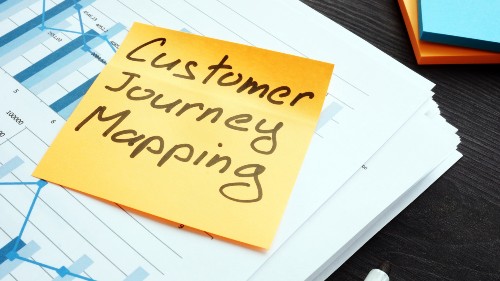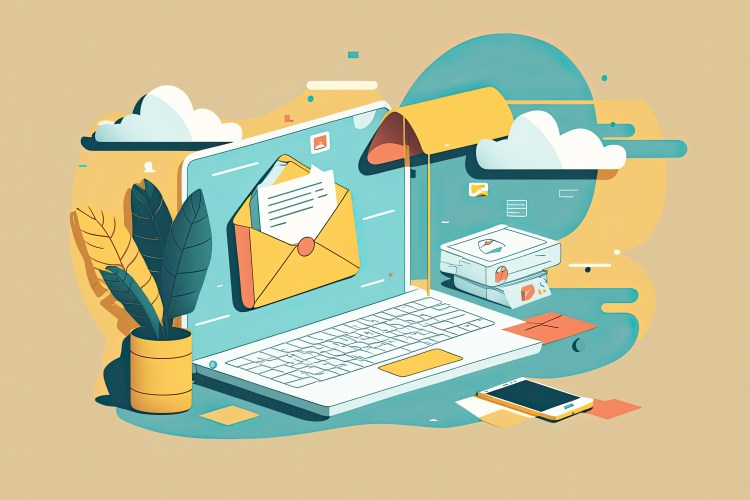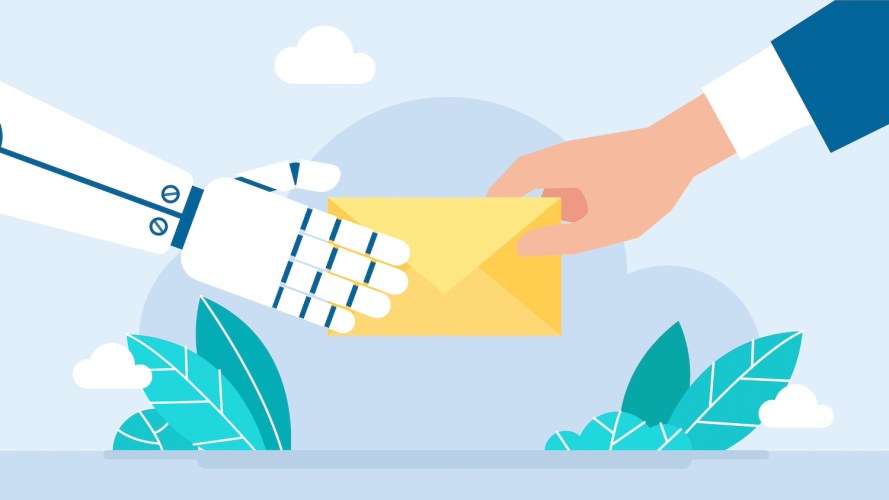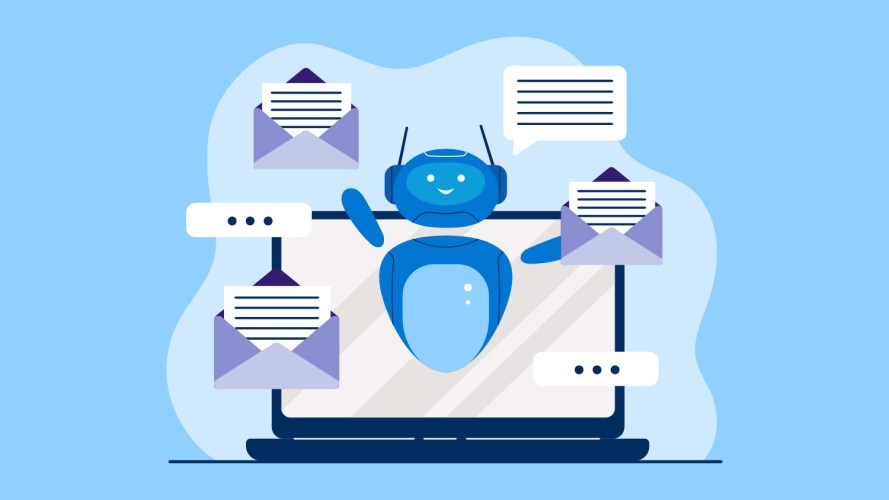Start Using Customer Journey Maps For Creative Campaigns



A customer journey map can be the difference between knowing the user experience you’re offering and leaving a user’s brand experience to chance. Here we explain what a customer journey map is, how to create one and why it can drive creativity.
Salesforce Staff
Now more than ever, marketers need to be focused on a future of innovation across every touch point of the customer journey. Salesforce’s latest State of Marketing report found sixty-six percent of marketers expect revenue growth over the next 12 to 18 months. Digital-first audiences are both primed for engagement and wider brand choice than ever before.
So: customer journey map. You’ve heard the name, but what exactly is it? In the simplest terms, a customer journey map is a visual representation of the ideal process a customer goes through to accomplish a goal with your product or service, as well as what they do and how they feel at each stage of that process.
The idea of a “journey map” allows you to visualise the user experience in a succinct and informative way. For example, you’ll be able to clearly see how your customer relates to your brand through interaction points. And from this you can develop a deep understanding of how a customer engages with your product or service, see your brand from a customer perspective, and define the qualitative factors that shape their ability or willingness to engage.
Still not 100% sure what a customer journey map is? We answer some common questions below.
Is there a customer journey map template I can follow?
It’s helpful to look at each customer journey as a series of touchpoints that your audience has with your brand, with a set outcome in mind. While there is no fixed template to create a customer journey map, there are few different types that you should be aware of before getting started.
- Current state map: Based on the experiences you provide right now, this type identifies current pain points so that you can incrementally improve.
- Future state map: Based on the experiences you will provide in the future, this type helps communicate a vision and drive a defined change.
- Day in the life journey: Current state, with a broader view of the customer, examining everything they do along the journey whether it involves your company or not. This is where marketers can uncover unmet needs and drive innovation that is not yet defined.
- Service blueprint: A simplified current or future state journey map, with people, processes, policies and technologies that deliver that experience layered on.The primary purpose of this journey type is for assigning ownership for specific experiences and interactions.
When should I create a customer journey map?
Mapping the journey lets you see every customer interaction at a strategic level so you can nurture them at each step. We create journey maps any time we need to understand our customers and their relationships with our company, particularly if we need to:
- Drive customer-centricity, shifting perspective from inside-out to outside-in.
- Break down silos to create one shared, organisation-wide vision.
- Assign ownership of customer touchpoints and interactions.
- Target and speak to specific customers with the right messages.
See the 5 trends facing marketers working from anywhere



How do I start a customer journey map?
Considering advice from our experienced digital marketing consultants, we recommend these five key steps to properly plan your customer journey, reduce frustration and see fast results.
- Keep the decision-making group small: building truly multi-touch, automated customer journeys will often mean many internal stakeholders could be involved in the design process. To keep the project moving, we recommend a small decision-making group with one designated leader who is empowered with the final decision. A RACI matrix can help to assign roles and responsibilities while structuring the working process.
- Keep it simple – crawl, walk, run: don’t get overwhelmed with mapping an all-encompassing customer journey. Depending on the complexity of your product and audience, creating smaller journeys first will prepare you for more complex journeys in the future. Here are some quick ways to kickstart your mapping process:
- Find the easy wins: Existing automated messages, like transactional communications or regularly sent ad-hoc emails you can automate.
- Limit your touchpoints: Create simple journeys of just two or three touchpoints. Launch the first version of the experience, learn fast and iterate.
- Start with data sources that are easy to access: If you’ve already configured a data connection in Salesforce Marketing Cloud, that’s your ideal starting point.
- Prioritise and focus: Keeping a vision of your outcomes is crucial at the start. Do this by focusing on:
- Customer experience: what is the CX you want to create? What are the gaps in your current experience delivery?
- The long view: how will these experiences align with your brand vision in the future?
- Annual outcomes: how will these experiences support the targets and goals set by your business this year?
- Plan for more: success breeds success. As your customer journey starts delivering, expect other stakeholders in the business to ask for your support. How will you scale?
- Lean into the Four Pillars of Strategy: mapping customer journeys should be a fun, creative process, but shouldn’t be started without the right parameters in place. Before building any journey, make sure you’re clear on audience, data sources, content requirements, and your channel mix. Outlining these first will save you time, energy, and send you down the best path to success.
- Use your resources: If you want to go fast, go alone. If you want to go far, go together. Don’t waste the helpful resources available to you as you start to map customer journeys. Here is a shortlist of helpful options to get you started or back on the right track:
- Salesforce team (Strategy and product experts)
- Trailhead (online education)
- Resource centre (Guides, ebooks, webinars and videos)
How do I create a customer journey map to drive creativity?
Start out by understanding that the point of creating a customer journey map is not actually ending up with the map. It’s also the discoveries along the way. You’re gathering data, deriving insights from it, and identifying actions to take based on those insights.
Ultimately, you’re getting to know customers, their needs and how those needs are met, or not, through interactions with your brand. Those insights, brought together with your company goals, will provide moments of inspiration that springboard into your greatest creative campaigns, or form the basis for ongoing and cumulative improvement.
The first step, then, is discovery — conduct your research. The methods of enquiry will depend on your product or service, but should include at least quantitative research with customers and the public (within your target demographic), and qualitative research with internal stakeholders. You may also observe users interacting with your product if that’s relevant for your brand.
Using that research, you’ll identify your persona, the scenario in which they interact with your brand, the touchpoints, and insights from your research about their actions and emotions at each touchpoint.
This actual journey mapping should be conducted in collaboration with other stakeholders from all levels and functions of the organisation who can offer varying insights and expertise. In a three-hour workshop, for example, you might offer a recap of your research, propose a persona for discussion, refine it, and map the journey collaboratively.
After the workshop, design the customer journey map, with a focus on succinctly presenting the story. Distribute it to all stakeholders, and — very importantly — never let it gather dust. Use it, iterate, use it more.
See the 5 trends facing marketers working from anywhere.
Find out what other tools marketing leaders are using to improve the customer experience. Check out the latest edition of the State of Marketing Report.



Find out what other tools marketing leaders are using to improve the customer experience. Check out the latest edition of the State of Marketing report.




















